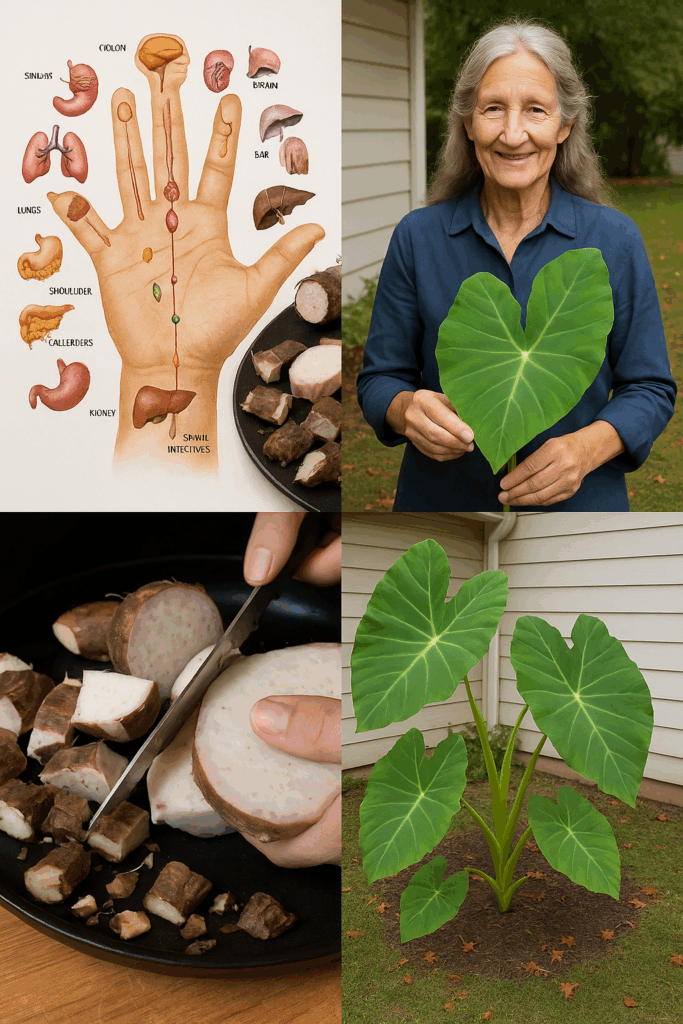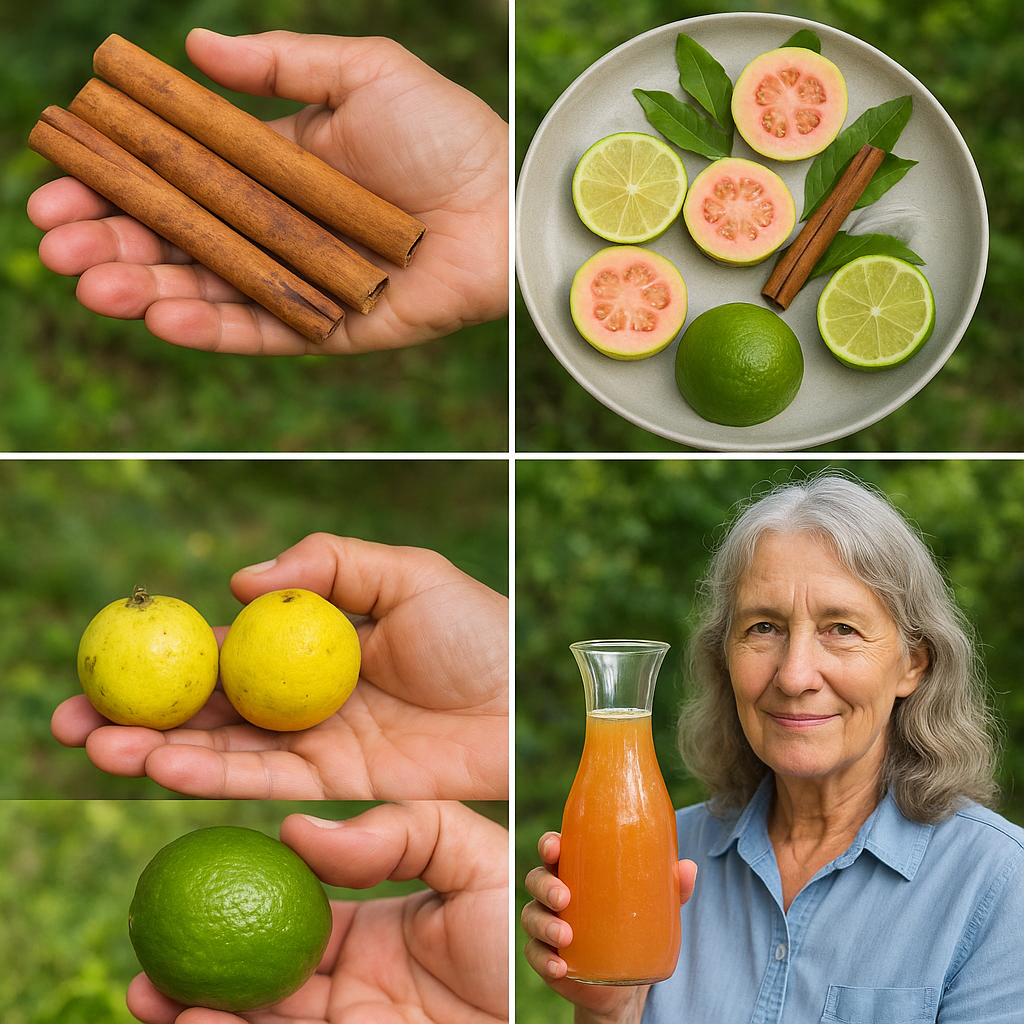Taro (Colocasia esculenta) is no ordinary root. With origins dating back over 10,000 years, this ancient crop has fed civilizations and healed generations—and it’s now making a powerful comeback. More than just a starchy side dish, taro is a nutrient-dense superfood, offering benefits that extend far beyond its earthy flavor and creamy texture.
From sustainable farming to modern-day nutrition, taro is proving itself to be a game-changer in both health and environmental resilience. Let’s explore why this humble root is a treasure worth rediscovering.
🕰️ A Legacy Rooted in Culture
One of the oldest cultivated crops in human history, taro originated in Southeast Asia and spread across Polynesia, Africa, the Caribbean, and South Asia. Known as kalo in Hawaii, arbi in India, and dasheen in the Caribbean, it has long been a symbol of life, fertility, and nourishment.
Unlike many crops that require ideal soil, taro thrives in wetlands and nutrient-poor environments, making it a lifeline in regions facing food insecurity or climate instability.

🥔 Nutritional Powerhouse: The Taro Root
What makes taro so special? It’s packed with complex carbohydrates, digestive fiber, and an impressive lineup of vitamins and minerals.
Key Benefits of Taro Root:
- Sustained Energy: Thanks to its complex carbs and low glycemic index, taro provides long-lasting energy without blood sugar spikes.
- Digestive Support: High in fiber, it promotes gut health, regulates bowel movements, and supports weight management by increasing satiety.
- Heart Health: Rich in potassium and magnesium, taro helps regulate blood pressure and support cardiovascular function.
- Immunity Boost: With vitamin C, E, and powerful antioxidants like beta-carotene, taro helps fight off illness and reduce inflammation.
- Naturally Gluten-Free: A perfect option for those with celiac disease or gluten intolerance.
🍽️ How to Cook and Enjoy Taro
Taro’s mild, slightly sweet flavor makes it a perfect fit in both savory and sweet dishes. But remember: never eat raw taro, as it contains calcium oxalate crystals that can irritate the mouth and throat.
Delicious Ways to Use Taro:
- Boiled or Steamed: Simple and healthy—perfect with dipping sauces.
- Taro Fries or Chips: A crunchy, fiber-rich snack alternative.
- Mashed Taro: Creamy and comforting, like mashed potatoes but with more fiber and flavor.
- Curries and Soups: Absorbs seasoning beautifully in stews and coconut milk dishes.
- Taro Desserts: From taro ice cream to pudding and pastries, it’s a staple in Asian sweets.
🌿 The Hidden Gem: Taro Leaves
Often overshadowed by the root, taro leaves are equally impressive in nutrition and culinary use. Once cooked (to neutralize oxalates), they become soft, flavorful, and rich in:
- Vitamin A for eye and immune health
- Vitamin C for skin and collagen
- Iron and Calcium for blood and bones
Culinary Uses:
- Laing: A Filipino classic of taro leaves simmered in coconut milk and chilies.
- Stuffed Rolls: Similar to grape leaves, taro leaves can be filled with rice, lentils, or meat.
- Brothy Soups: Adds texture and nutrients to traditional stews.
❤️ Health Benefits Beyond the Plate
1. Heart and Blood Pressure Support
Potassium and magnesium in taro help maintain healthy blood pressure and prevent arterial stiffness.
2. Blood Sugar Management
Taro’s resistant starch and fiber slow sugar absorption, helping stabilize glucose levels—a key benefit for people managing diabetes.
3. Skin Health and Anti-Aging
Thanks to vitamin E and antioxidants, taro supports cell regeneration and reduces oxidative stress on the skin.
4. Immune Function and Recovery
Its antioxidant content helps reduce inflammation, boost immunity, and accelerate healing.

🧘♀️ Taro in Traditional Healing
Across cultures, taro has been more than food—it’s medicine.
- In Ayurveda, taro paste is used to soothe inflammation and skin irritation.
- In Pacific Island traditions, taro represents life force and is part of ceremonial healing.
- In Traditional Chinese Medicine, taro is used to strengthen digestion and tonify the spleen.
🌍 Sustainability in Every Root
Taro isn’t just healthy for people—it’s healthy for the planet.
- Grows in wetland or marginal soil, reducing the need for fertilizers or rich farmland.
- Low waste: Every part of the plant (root, leaf, and stem) can be consumed or composted.
- High-yield: A small crop can produce a large harvest, ideal for food security and resource-efficient farming.
For communities grappling with the effects of climate change or food scarcity, taro is a resilient, regenerative crop with deep cultural roots and practical solutions.
🍠 How to Add Taro to Your Daily Routine
If you’re just beginning your taro journey:
- Start with boiled taro served with herbs or olive oil.
- Swap regular fries with baked taro chips.
- Try taro coconut soup as a warming, nutritious meal.
- Use taro flour as a gluten-free base for pancakes, breads, or cookies.
- For dessert lovers, experiment with taro ice cream or mochi.
🌿 Final Thoughts: Ancient Wisdom for Modern Wellness
Taro is more than a root. It’s a legacy crop that connects us to the earth, to our ancestors, and to a more sustainable future. From its impressive nutrient profile to its eco-friendly cultivation, taro represents a holistic approach to food, health, and healing.
If you’re seeking nourishment that goes deeper than calories, taro delivers—with every creamy bite, every hearty stew, every leaf that nourishes not just your body, but the planet as well.
Rediscover taro. Your body—and the earth—will thank you.


